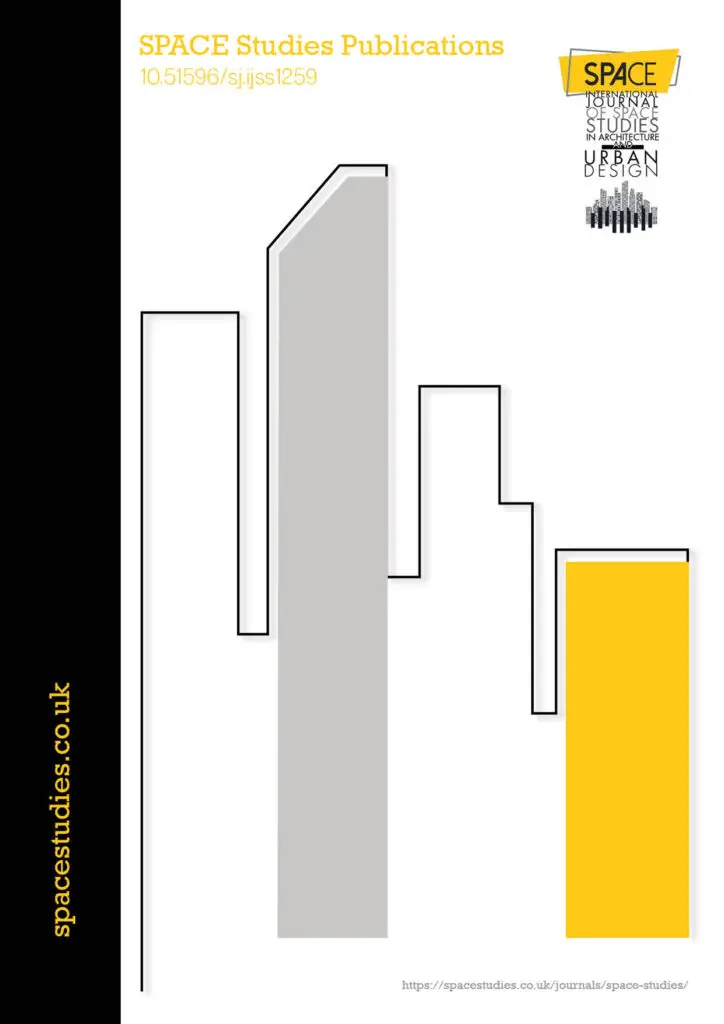
Dhaka, a low-laying city in the world’s most extensive delta system, is rapidly grabbing its mandatory natural landscape into the built-up area. This deltaic city’s water resources once played an essential role in structuring settlement patterns and keeping the overall hydrological, ecological, and environmental equilibrium. Eastern Fringe, the crucial natural, spontaneous territory of the Dhaka Metropolitan Area (DMA) to prevent the city’s flooding problems and environmental degradation, is rapidly converting from traditional homestead to urbanised land. The city’s present development activities for this part and the entire city do not respect this profound geo-morphological nature of the territory or consider the traditional land-water relationship with the settlement.
This paper will analyse the land-use conversion in the study area, focusing on the land-water interface to identify the naturally landscaped change for the built-up area. The article will first elaborate on the study area’s enriched land-water system and its local integration in the land-water interface. It will also explain the importance of natural land-water resources for the city’s hydro-ecological. Finally, through ArcGIS and Google Earth Image analysis, it will discover the rapid loss of natural land-water resources, its process of conversion and associated environmental degradation due to land-cover alteration in the focus area. This paper will give importance to reinstalling the traditional land-water relationship in rapidly growing urban areas to check environmental degradation.
£450.00 per Year.
Access to conference registration
Access to Journal subscription
£380.00 per Year.
Access to conference registration. Proof of student eligibility required.
Access to Journal subscription.
£410.00 per Year.
Discounts on conference registrations, SPACE shop and e-journals. Access to members only areas on the website.
Access to Journal subscription.
£400.00 per Year.
Student priced discounts on conference registrations, SPACE shop and e-journals. Access to members only areas on the website. Proof of student eligibility required.
Access to Journal subscription.
This paper has been presented at the Conference “AGORA CAUMME 2020 – Mediterranean: Between Expansion and Regeneration” and selected by the Conference Scientific Committee to be published in the SPACE International Journal of Space Studies in Architecture and Urban Design. Peer review under the responsibility of the scientific committee of AGORA CAUMME 2020.
Ashraf, K. K. (2017, August 7). Dhaka needs a hydraulic vision. The Daily Star. https://www.thedailystar.net/op-ed/dhaka-needs-hydraulic-vision-1443736
CEGIS. (2018). CEGIS. Data was collected from the Centre for Environmental and Geographic Information Service(CEGIS), Dhaka, Bangladesh.
DAP. (2010). Detail Area Plan (DAP) under Dhaka Metropolitan Development Plan (DMDP) 1995-2015). Rajdhani Unnayan Kartipakkha (Rajuk), Dhaka.
David, L. J. (1988). Environmentally sound management of the Zambezi river basin. International Journal of Water Resources Development, 4(2), 80–102. https://doi.org/10.1080/07900628808722377
Dewan, A. M., & Yamaguchi, Y. (2008). Using remote sensing and GIS to detect and monitor land use and land cover change in Dhaka Metropolitan of Bangladesh during 1960-2005. Environmental Monitoring and Assessment, 150(1–4), 237–249. https://doi.org/10.1007/s10661-008-0226-5
DTCB. (2010). Preparatory Survey Report on Dhaka Urban Transport Network Development Study (DHUTS) in Bangladesh (Issue March). Dhaka Transport Coordination Board (DTCB), Ministry of Communication, GoB, Bangladesh.
Halcrow. (2006). Updating/Upgrading the Feasibility Study of Dhaka Integrated Flood Control Embankment cum Eastern Bypass Road Multipurpose Project (p. Final Report, Volume 1). Halcrow Group Ltd & CEGIS, June 2006.
Huq, S., & Alam, M. (2003). Flood Management and Vulnerability of Dhaka City. Bangladesh Center of Advance Studies (BCAS). Dhaka.
Hye, A. (1998). The 1998 Flood : Impact on Environment of Dhaka City (A. Nishat, M. Reazuddin, R. Amin, & A. R. Khan (eds.)). Department of Environment and IUCN: Dhaka.
Islam, A. K. M. S., Haque, A., & Bala, S. K. (2008). Hydrologic Aspects of Flood 2007. Institute of Water and Flood Management, Bangladesh University of Engineering and Technology.
Islam, M. N., & Kitazawa, D. (2013). Modelling of freshwater wetland management strategies for building the public awareness at local level in Bangladesh. Mitigation and Adaptation Strategies for Global Change, 18(6), 869–888. https://doi.org/10.1007/s11027-012-9396-0
Jahan, N., Islam, S., Shakil, S., Nabin, M., Shanta, A., Hasan, A., Islam, I., & Akhter, S. (2013). Sustainable City Design: Developing Conceptual Planning Proposal for Eastern Fringe of Dhaka City, Bangladesh. Presented at the Global Meet on Sustainable Development – 2013, Dhaka: Eminence Bangladesh.
JICA. (1992). Feasibility Study on Greater Dhaka Protection Project. Japan International Cooperation Agency (JICA).
Nakashima, S., & Khan, M. . (1994). A Basic Guide to Understanding the Environmental Impacts of Rural Roads on the Wetlands of Bangladesh. Care International, Bangladesh.
Peeters, S., & Shannon, K. (2011). Readdressing Dhaka’s public water bodies: A design research. Nakhara: Journal of Environmental Design and Planning, 7(History in Design : Writing Asian Modernities), 25–45. https://ph01.tci-thaijo.org/index.php/nakhara/article/view/104970
RAJUK. (2018). No Title. Data Collection from Rajuk prepared for DAP in Dhaka Structural Plan 2016-2035, Rajdhani Unnayan Kartipakkha (Rajuk), Dhaka.
Sayed, M. Ben, & Haruyama, S. (2017). Flood Risk Measuring under the Flood Protection Embankment Construction in Dhaka Metropolitan Zone. Journal of Geosciences and Geomatics, 5(2), 46–58. https://doi.org/10.12691/jgg-5-2-1
No potential conflict of interest was reported by the author(s).
Ayasha Siddiqua
Enter your email and we’ll send you more information about all activities and membership.

28-29 November 2024
Registered address: 151 West Green Road, N15 5EA, London, UK
Mails to: 23A Alwold Crescent,
SE12 9AF, London, UK
+44 2037242458
+44 7780014146
space@spacestudies.co.uk
architecturalspacestudies@gmail.com
Sign in to continue
Not a member yet? Sign up now